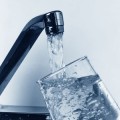San Jose’s water is safe to drink. That’s the response of the city’s three water companies, after the release of the Environmental Working Group’s report earlier this week about the presence of hexavelent chromium in the tap water. It’s also the response of the Environmental Working Group itself, which released the study.
“I don’t really like to say we’re ‘worried.’ What we’re concerned about is exposure throughout life,” says Rebecca Sutton, who coauthored the report. Yet even that was not reassuring enough for the water companies, who don’t know where Sutton and her colleagues got their data.
The city-owned San Jose Municipal Water system says that they haven’t found any traces of the chemical in any of the water that it supplies the city, adding: “We’re not clear where they took the sample. It’s not in the report itself.” Great Oaks Water, also says that its water is safe, and claims that it is 200 times lower than the current standard.
That question of where the water tested came from was also asked by the privately owned San Jose Water Company. Their representative said that he contacted the EWG, but did not get an answer. Sutton denies this and says that the sample came from a drinking fountain at a public library serviced by the San Jose Water Company. Nevertheless, the Water Company insists that its water is safe too.
So is there cause for concern? Perhaps. Despite its declaration that the water is safe, the EWG is nonetheless recommending that people acquire reverse osmosis water filters for their homes. Tang argues that these cost thousands of dollars—in fact, a quick search on the internet found several models for under $400.That is still a lot of money for some people, especially in these hard times, but there is no question that at least a few of these will pop up under people’s Christmas trees on Saturday morning.
Read More at NBC Bay Area.
 Leo Villareal
Leo Villareal 
